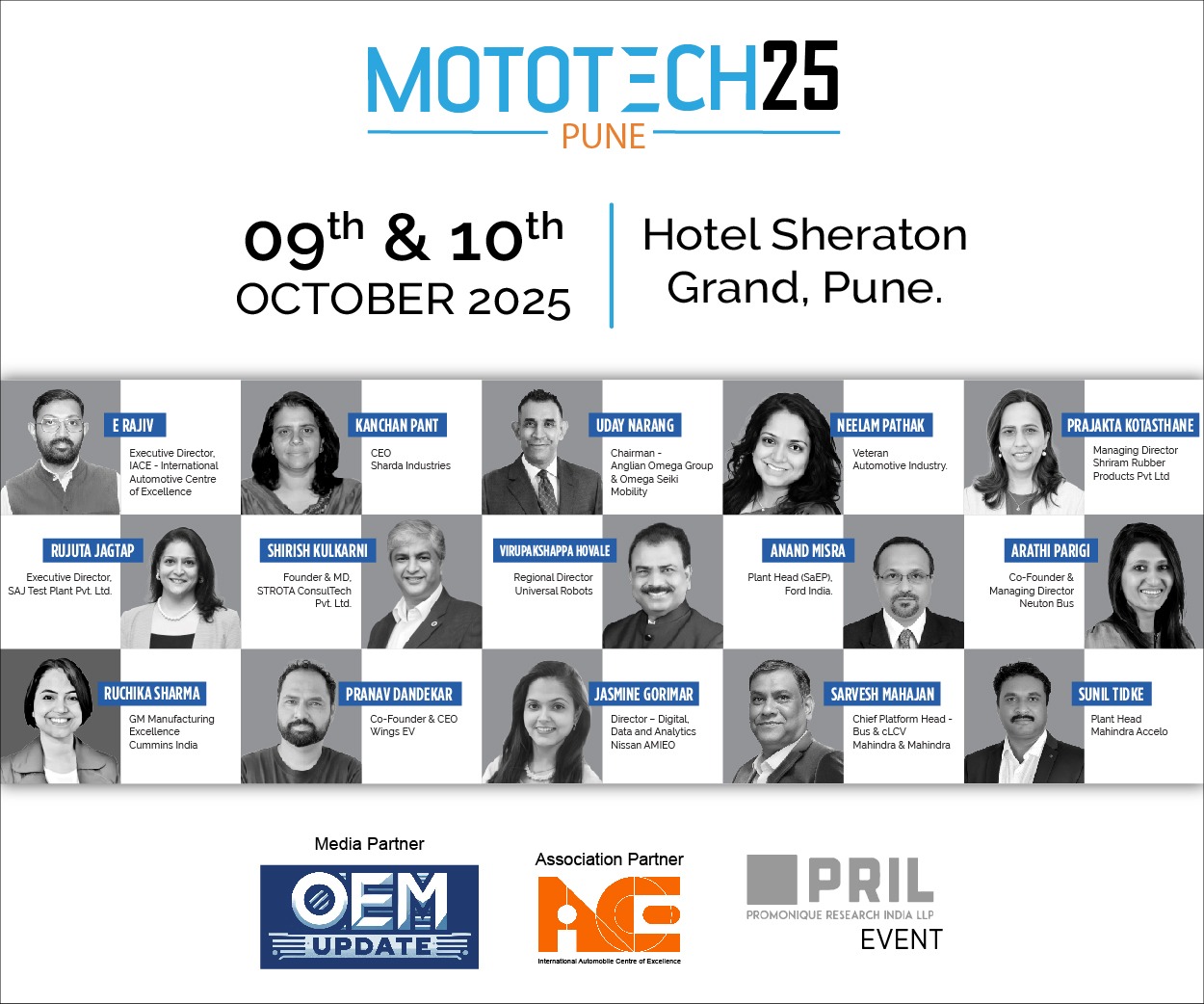“Embarking on Industry 4.0 journey means taking a risk”
By OEM Update Editorial June 29, 2017 2:23 pm IST
Industry 4.0 constitutes a paradigm shift from optimising physical assets to optimising how data and information are leveraged along the product lifecycle.
Sridaran Ramachandran, Head – Manufacturing Engineering, CRI Pumps Pvt Ltd explains the key ingredients of manufacturing digitisation.
In Indian context the industry generally believed in cheap Labour as a key to solve this Holy Grail. With industry 4.0 this bound to change rapidly. Few companies are taking a structured approach to implementing Industry 4.0 levers. According to McKinsey research, only 16 per cent have a clear strategy in place, and only 24 per cent have assigned clear responsibilities regarding Industry 4.0 efforts. Even companies in this select group tend to make one of two missteps: either they assign Industry 4.0 responsibility to a staff function with no direct execution power, or they place the required responsibility far too low in the management hierarchy. In either case, realising full impact potential is jeopardised. Ultimately, embarking on the Industry 4.0 journey means taking a risk—and risk taking cannot be delegated. Top management must therefore take ownership and apply a programmatic approach in order to drive value quickly and effectively. This high level of prioritisation helps determine the success of an Industry 4.0 transformation, just as it did for lean.
A successful digital evolution requires a thorough understanding of the specific starting point at each individual company, manufacturing site, or even department in order to identify and prioritise digital opportunities that add value. Companies can conduct on-the-spot diagnostics by asking themselves how well they utilise digitally enabled lean levers, and what specific improvement potential they might target. Assessing this starting point provides organisations with the basis for laying out a path to digitally enabled lean—the next level in value creation
Digitisation of manufacturing: A powerful innovation process
In manufacturing, your money is made on the shop floor. Real-time data is power in helping to identify and then proactively address inefficiencies and challenges on your factory floor.
One of the most critical aspects of manufacturing, and certainly one of the most concerning, is quality management. With Real Time Process Monitoring tools one can reduce the number of inspectors and equipment necessary to meet your customers’ tough requirements, while gaining peace of mind that you are meeting strict quality standards.
How essential is Statistical Process Control (SPC) to analyse the data
Statistical Process Control (SPC) and process monitoring provides for the automatic capture and recording of process data and associated variable data. The system automatically analyses the data recorded and allows the user to generate the necessary charts, thereby reducing the time, effort and manpower that are required to accomplish SPC.
Real-time preventative maintenance with production monitoring
Regular machine and tool maintenance can ensure that work centres do not unexpectedly go down and parts are produced most efficiently. However, with real time preventative maintenance tools, one can implement a complete maintenance program for all his/her machines, tools, dies, auxiliary equipment and more. Additionally, maintenance personnel can be immediately alerted to problem areas such as down work centres or machines experiencing problems. This immediate notification of problems can minimise downtime and lost production. By tracking the actual usage (hours and cycles run) of equipment, one can proactively determine the use and wear of various equipment being monitored and create a preventative maintenance schedule that can minimise downtime and lost production.
To maintain cost pressure, needs to improve productivity. As cost pressure across all industries continually increases, companies face the need to improve productivity by two to four percentage points every year. The estimates, based on numerous studies, show that digitally enabled advancements are unleashing the potential to create value equivalent to efficiency improvements of 15 to 20 per cent. This productivity leap will not come from the application of a single solution. To generate meaningful impact, companies will have to address all elements of profit and loss while also applying a broad range of solutions at scale.
‘Smart factory’ is all about making information for humans smarter
Digital testing of pumps is a great example of CRI readiness for smart factory. Sridaran opines, you can talk about parts / process synchronisation. Making it easy for worker and deskilling a job or one can talk about Robot ready assembly parts or even your assembly conveyor as an example. Typically, smart factory is all about making information for humans smarter.
How data and information are leveraged along product lifecycle
CRI is currently on the journey in to adopting industry 4.0 to achieve the digital transformation. Industry 4.0 constitutes a paradigm shift from optimising physical assets to optimising how data and information are leveraged along the product lifecycle. This digital optimisation builds on an end-to-end information flow – in short: a “digital thread” running through the entire product lifecycle as its digital representation. This digital thread starts with the digital design of the product, passes on through the digitally steered and controlled manufacturing process, leads to the digital monitoring of the end product in operation (e.g., for maintenance purposes), and finally ends in the recycling of the product.
Following are the steps where digitally stored information can help identify parts for reuse:
• Information capturing and recording
The foundation for using data to capture opportunities is of course the collection and recording of relevant information. Inefficiencies can only be eliminated if they are detected and documented, thus the physical production process needs to be mapped along the digital thread – based on the collection of real-time data in an automated way and with historical data points.
• Information transfer
The prerequisite for preventing information leakages and losses along the digital thread is efficient information transfer. Data collected at a specific point in the value chain might be most useful at a different point (either earlier or later) in that same value chain. To make information available at a specific point, it is crucial to share it across the value chain, for most advanced applications even in real time. Therefore, companies need to integrate disparate sources of data from different applications to create a holistic view of the end-to-end process.
• Information processing and synthesis
Getting from data to insights requires thorough processing of the captured information. Arriving at the right conclusion depends on both relying on a relevant causal relation between factors (e.g., derived from historical data points) and employing this insight to optimise the status quo. Optimisation opportunities exist where either interrelations are not obvious or where insights are not yet used for optimisation.
• Turning information into outcomes
The last step needs to close the loop from the digital sphere back to the “real world” by translating conclusions from the data analyses into recommendations and – ultimately – actions. Many decision making processes still require human involvement, while data analyses are often already automated and performed in real time. Therefore, opportunities are associated with speeding up and potentially (partially) automating these decisions, and triggering the required actions. In the semiconductor industry, it is standard to operate advanced process control (APC) systems that translate anomalies detected by a statistical process control (SPC) system into automated adjustments of equipment parameters. This means an automated feedback loop is created that is used to ensure the manufacturing process produces the required outcome.
Cookie Consent
We use cookies to personalize your experience. By continuing to visit this website you agree to our Terms & Conditions, Privacy Policy and Cookie Policy.













